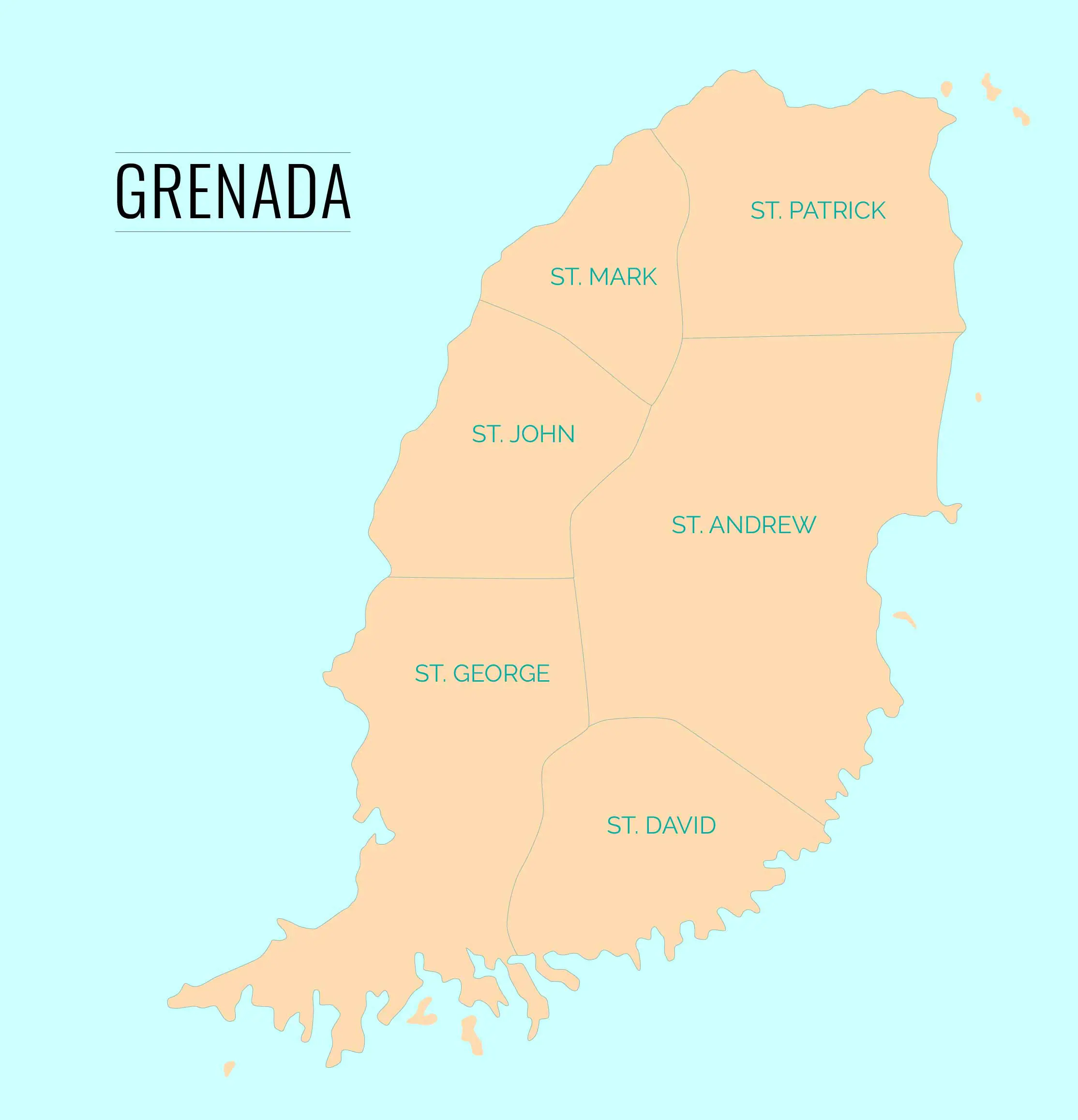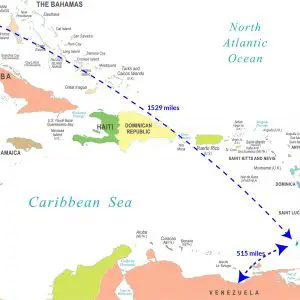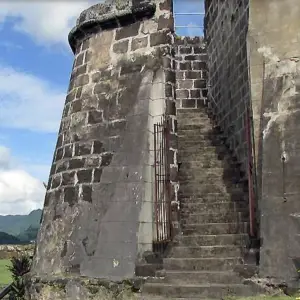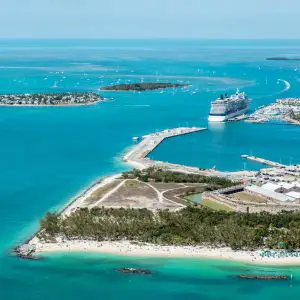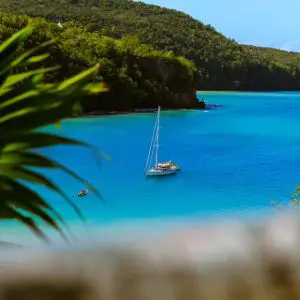When it was first colonized by the French, Jacques Dyel du Parquet laid out boundaries that formed Grenada’s parishes. Throughout French rule and the subsequent surrender of the island to the British in the Treaty of Paris, the six original parishes have remained, even if their boundaries have changed a bit.
Grenada is divided into six parishes, which are regions that were originally under the care of local churches. These areas now act as administrative divisions and are used as the smallest tier of local government. The six parishes in Grenada are:
- Saint George
- Saint Andrew
- Saint David
- Saint John
- Saint Mark
- Saint Patrick
This article will tell you all about the parishes of Grenada, from their histories to their attractions. If you’re looking for information on Grenadian parishes, look no further!
St. George Parish
St. George Parish is home to the city of St. George’s, which is both the capital city of Grenada and the largest city. St. George’s is where most of Grenada’s population lives. The city curves around a horseshoe-shaped harbor on the south-west corner of the island. It has become more developed in recent years but continues to maintain a rich and interesting history and culture.
This parish is the second largest parish. It has an extensive tourist infrastructure, with the Maurice Bishop International Airport, Grand Anse Beach, and many of the resort hotels being located in this parish. Saint George Parish is also home to many of the attractions on the island.
Some of Grenada’s attractions that are in St. George Parish include:
- Fort George
- Fort Frederick
- Grenada National Museum
- Molinere Bay Underwater Sculpture Gardens
- High Five West Indies Cricket Heritage Centre
Fort George
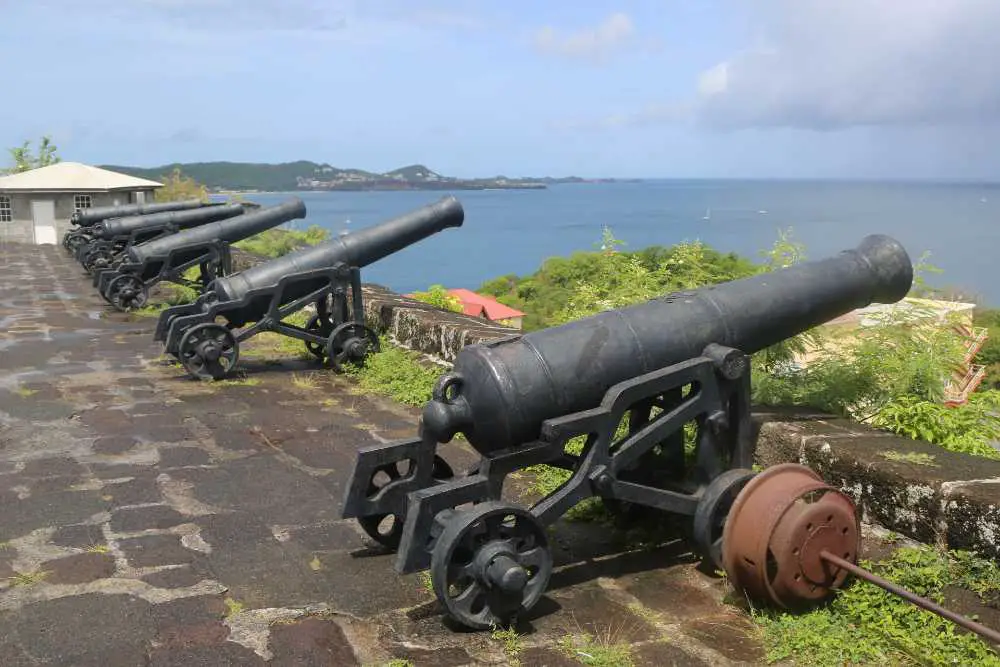
Fort George, Grenada’s oldest fort, towers 175 feet above the city and offers stunning views of the harbor, lagoon, and Grand Anse Beach while giving a glimpse into the rich history of Grenada. The structure is one of the finest remaining examples of Vauban-style masonry fortresses in the world. Climb to the top to see the cannons and make sure to explore the defensive tunnels just outside the main fort.
A plaque marks the spot where Maurice Bishop was executed, which triggered the invasion by the United States in 1983. Other plaques show important landmarks. On the weekends, it is possible to gain access to the police base on the backside.
Fort Frederick
Fort Frederick is smaller and younger than Fort George. Fort Frederick was built by the French following their capture of the island from the British. The French tricked the British by attacking from the land and not the sea. To prevent this tactic from being used against them, the French built Fort Frederick with its cannons facing inwards, giving it the nickname, “Backwards Facing Fort.”
It was completed in 1791 and is considered the best-preserved fort on the island. It offers a 360-degree view of Grenada’s east coast, mountains, and rain forest.
Grenada National Museum
The Grenada National Museum focuses on collecting, preserving, displaying, and promoting the historical and cultural heritage of Grenada. The museum was built in 1704 and housed the French barracks until it was later used by the British as a prison for female inmates until 1880.
Its featured exhibits include various aspects of Grenada’s history, such as:
- Slavery
- First Inhabitants
- Plantation Economy
- Whaling and Fishing
- Early Transport and Technology
The museum also offers live cultural performances featuring jazz, dancing, drumming, singing, and poetry to keep the national culture protected and alive.
The museum is an awesome activity on a rainy day. Check out this article to discover more things to do when it rains on your Grenadian vacation: When is Grenada’s Rainy Season.
Molinere Bay Underwater Sculpture Gardens
Molinere Bay Underwater Sculpture Park is the first of its kind. The site is now considered one of National Geographic’s 25 Wonders of the World. The park covers 800 square meters and contains 75 works of art located in a series of sand patches and gullies between rock formations. The sculptures are 5-8 meters deep and able to be seen by snorkeling, diving, and glass-bottomed boats.
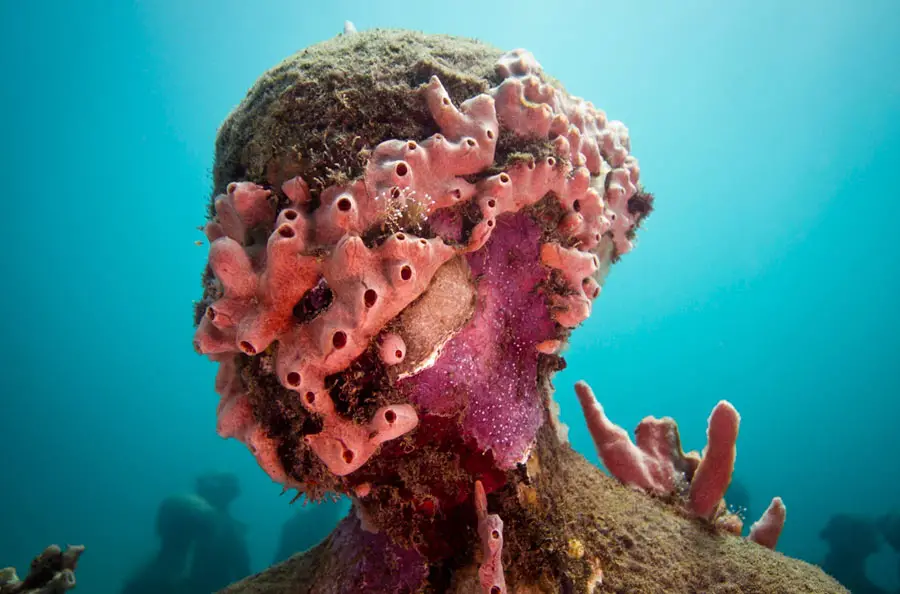
– Pure Grenada
These artificial structures are not only beautiful to see but provide a home for marine life after the bay was ravaged in 2004 by Hurricane Ivan. They are made from long-lasting, pH neutral cement that provides a stable, permanent, and textured platform that allows coral polyps to attach to them.
The park draws divers and snorkelers away from nearby fragile reefs in Flamingo Bay, helping to protect them from excessive tourism. Because of this, the park has helped to create a marine protected area. The garden is home to many celebrated works, including Viccisitudes, which features a ring of children and is believed to be a tribute to slavery.
High Five West Indies Cricket Heritage Centre
Dedicated to preserving and bringing to life the unique and mostly untold story of West Indies cricket history, the center has an extensive collection of artifacts and display items. The items trace the history of cricket in Grenada and the West Indies from the late 1800s through the present day. The goal of the center is not to pay tribute to any specific sports hero, but to tell the complete story of the game.
Saint Andrew Parish
Lying along the east coast of the island, Saint Andrew Parish is the largest parish by area and has the longest coastline. Most of its residents are in its capital city of Grenville? Parish. Saint Andrew Parish is also home to the Grand Etang National Park. This park situated in the high in the mountains around a small lake provides great hiking and trekking adventures.
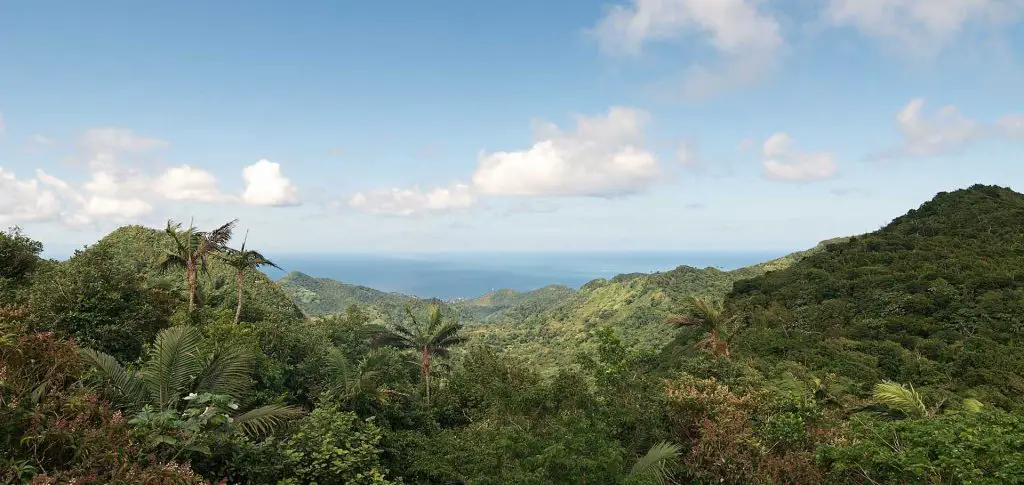
Check out Why Grand Etang Lake is a Must See to learn why Grand Etang National Park and lake of the same name, is worth a visit.
If you are looking for attractions in Saint Andrew Parish, you can find:
- West India Spices, Inc.
- Mt. Carmel Waterfall
- Seven Sisters Waterfall
- Claboney Volcanic Hot Springs
West India Spices, Inc.
West India Spices, Inc. is the largest processing and distillation plant in the Caribbean built to produce essential oils. Oleoresins, ground spices, and other spice products are also produced here. It offers an authentic spice tour and overview of their processes – from start to finish. Visitors can tour this agriculture factory and learn about Grenada’s spice cultivation history.
The tour presents Grenada’s nutmeg and spice cultivation history, factory processes, and shows the many uses and benefits of their products. Essential oils and other products are available in the gift shop.
Waterfalls
Saint Andrew Parish is home to some of the most beautiful waterfalls on the island. Mt. Carmel and Seven Sisters are the most well-known and visited waterfalls.
- Mt. Carmel Waterfall: Also known as Marquis Falls, Mt. Carmel’s two waterfalls plunge 70 feet to the pools below. Located about 2 miles outside of Grenville, the waterfalls can be reached by a 30-minute hike through a private plantation. There is an entrance fee, and guides are available upon request. Most tour buses do not visit here, so a bus or private car will be needed.
A small wooden hut is available for changing into swimming clothes. The falls provide several small pools perfect for taking a dip. For the more adventurous, it is possible to walk within the waterfalls in some places.
- Seven Sisters Waterfall: These waterfalls are in one of Grenada’s most beautiful regions. They cascade down a mountainside in the Grand Etang National Park into a large pool that is well suited for a swim. The trail to reach the falls takes about 45 minutes with sometimes muddy and narrow areas.
Once you reach the falls, you see seven “steps” of large waterfalls. Not far from these falls is another, more hidden falls, named Honeymoon Falls. It is not easily accessible, and many people miss it altogether.
Claboney Volcanic Hot Springs
Claboney Volcanic Hot Springs is one of the easier hot springs to reach on the island. You can drive as close as 100 yards to the actual springs but will have to walk a short distance. The road does have some sidetracks and branching, so it is easy to get off track. Asking for directions usually helps, but local guides ensure you find the hot springs and can provide great local commentary and information.
The hot springs contain a type of iron oxide that keeps the water hot. However, during the rainy season, the outflow of water increases, leaving the water warm, but not hot. There is no charge to visit the spring, and it is often deserted during the week. Be aware that the trail to the springs can be muddy, especially following a rain.
St. David Parish
Located on the southeast corner of Grenada, Saint David Parish is sometimes referred to as the “The Virgin Parish” because it has no main town. The main town of Megrin was destroyed in the Fedon conflict in the 1790s and never rebuilt. The parish is home to a rocky coastline with spectacular inlets and bays. It also has a large variety of small, hidden beaches.
Two attractions you will find in Saint David Parish are the Westerhall Rum Factory and Laura Land Herb and Spice Garden. Knowing that these are the two main attractions in the parish makes it easy to see why it is also known as the “Parish of Spices.”
Westerhall Rum Factory
The Westerhall Rum Factory is home to the oldest working waterway in the western hemisphere. Dating back to the 1700s, Westerhall Estate Rum is considered one of the finest rums in Grenada.
Tours are available to see the ruins, waterwheels, and the museum display of old artifacts and equipment. Visitors can see the entire rum-making process, enjoy lunch at the estate, and even sample the rum as individuals or in tour groups.
Laura Land Herb and Spice Garden
Laura Land Herb and Spice Garden is located near Perdmontemps. Numerous trees, herbs, and spices that grow on the island are on display. All the spices that are exported by Grenada are showcased here. Educational guides provide visitors with an educational tour.
Saint John Parish
Saint John Parish, on the western side of the island, has little tourism. However, the main town of Gouyave is known by the locals as “the place that never sleeps.” Known as Charlotte Town in the past, Gouyave is Grenada’s second-largest town, excluding the capital city.
Gouyave is a fishing village, with a popular local event known as Fish Fridays. Vendors line the street with grills, fryers, steamers, and cookers to prepare their Grenadian fare. You can also visit Concord Falls in Saint John Parish.
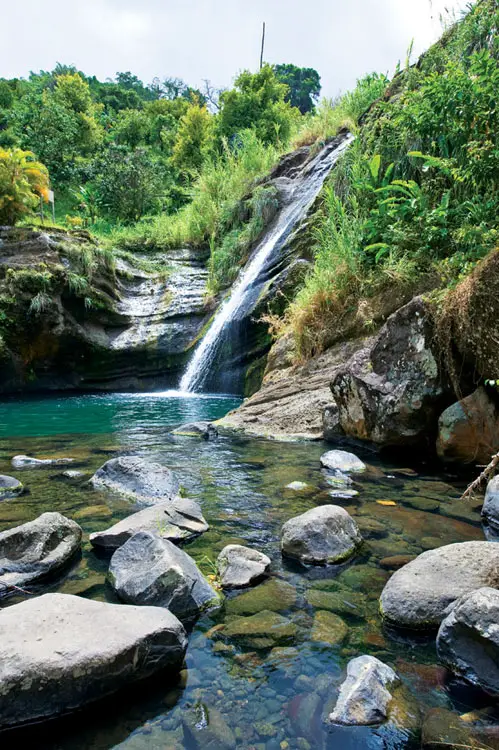
Photo from Pure Grenada
Concord Falls
The Concord River flows over three tumbling rapids to make up Concord Falls. It is located about 2 miles from the village of Concord, and a paved road leads to the falls. They can be visited by tour or independently. Bring a swimsuit to take an icy plunge in the water or relax at the Concord Falls shop and snack bar.
Be cautious when hiking between the falls. Hurricane Ivan destroyed many of the small bridges that crossed the river. Very few of the bridges have been rebuilt. This lack of renovation means that it is necessary to cross the river using rocks as steppingstones.
St. Mark Parish
Saint Mark Parish is located on the northwest corner of the island. It is the smallest parish in both area and population. Only about 4,000 people live in Saint Mark Parish. This little parish has the highest mountains and the tallest waterfalls on the island.
The small fishing village of Victoria is located on the coast and is the center of activity for Saint Mark Parish. It is locally called Sunset because it is a great place to watch the sunset.
Other notable attractions in this parish include:
- Saint Mark’s Festival Day
- Tufton Hall Waterfall
- Mount Saint Catherine (Volcano)
Saint Mark’s Festival Day
The annual St. Mark’s Sunset City Festival is an annual event hosted in Victoria. It is a cultural extravaganza with performances, music, and entertainment. The event includes a talent and fish cooking competition, health fairs, and exhibits. Each year has a specific theme. The festival ends with a street party on the final day. It is held a few weeks after Easter.
Tufton Hall Waterfall
The Tufton Hall Waterfall is the tallest in Grenada. It is located just outside Victoria, about halfway to St. Catherine. It is approximately 25 meters tall. However, be prepared for a strenuous 3-hour hike each way if you want to access and visit the waterfall. Guides from Victoria are available to help with the hike with ropes and cutlass.
Mount Saint Catherine Volcano
Saint Catherine is the youngest of the five volcanoes in Grenada. It is approximately 2,750 feet tall, making it the highest peak on the island. It has beautiful views. However, many of the paths are muddy, wet, and treacherous. It is recommended that you use local guides when visiting Mt. St. Catherine.
St. Patrick Parish
Saint Patrick Parish is located on the northern end of the island. It has a spectacular coastline with several beautiful bays. Saint Patrick also contains some volcanic cones and craters. This parish is also home to several large estates that account for most of Grenada’s nutmeg and cocoa production. The capital city of Sauteurs is the largest town in this parish and overlooks Sauteurs Bay.
When visiting Saint Patrick Parish, you can check out River Antoine Run Distillery, Leapers Hill, and Sulfur Springs.
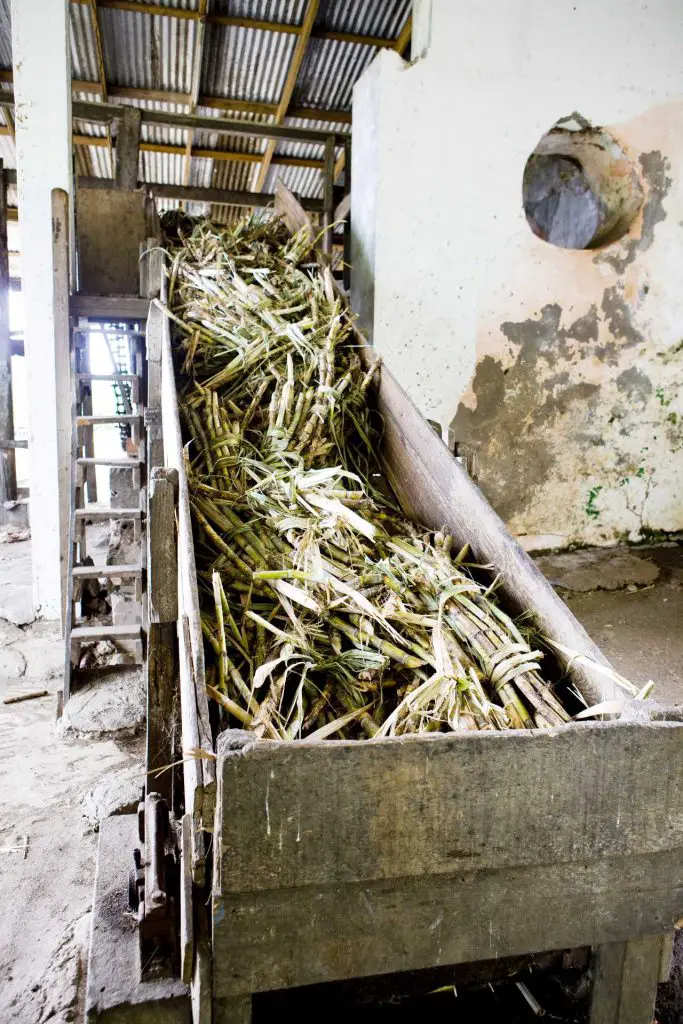
River Antoine Rum Distillery
Grenada is known for its rum, and River Antoine Rum Distillery is the oldest functioning water-powered distillery in the Caribbean. It has been in operation since 1785. Guided tours show the process of rum production from harvesting the sugar cane to fermentation to bottling. At the end of the tour, you get a free sample of rum.
However, be warned: River Antoine makes rum that is 138- and 150-proof. Less potent versions are available for purchase. Tours are Monday through Friday and cost about $2.
Leapers Hill
Leapers Hill is a cliff that falls directly into the sea north of Sauteurs. History reports that in 1651, forty Kalingo Indians committed suicide by leaping off the cliff to avoid being captured by the French. The area is marked by a monument, which has created some controversy due to its Christian symbols representing a group of people that were not Christian.
Sulfur Springs
Grenada, due to its volcanic origins, has several different places with warm sulfur hot springs. One such place in Saint Patrick Parish is near the River Sallee. There are over five natural springs for bathing that are open 24 hours a day.
Final Thoughts
Grenada is an island nation with a rich cultural heritage. It is still governed by these parishes today. Each parish offers a unique part of Grenadian culture, landscape, and history.
Many tourists visit the capital city of St. George’s in Saint George parish and never leave that parish, meaning they miss much of what the island has to offer. Don’t make this mistake! Travel throughout the island and admire the beauty of all six parishes.
Don’t forget to check with the locals. They often know of cultural events and locations that are left off of many trip advisories. They can also serve as local guides for out of the way places, like waterfalls that are harder to reach.
